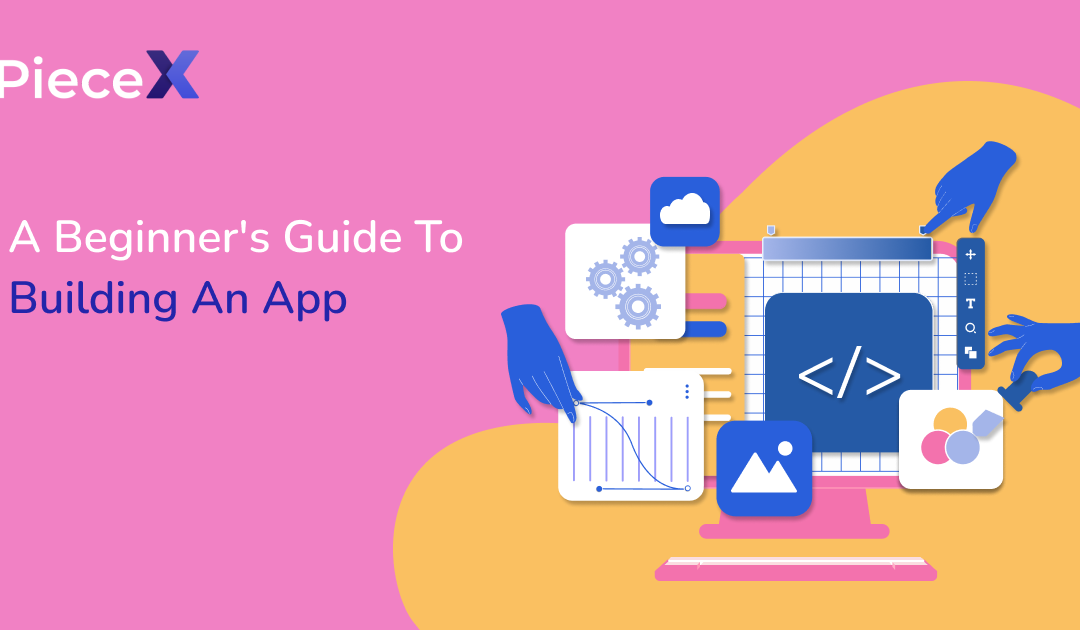

In the ever-evolving world of app development, staying ahead of the curve isn’t just a benefit—it’s a necessity. This is where artificial intelligence (AI) comes into play, transforming the landscape of how apps are designed, developed, and deployed. Let’s dive into how AI is revolutionizing this field, making the lives of developers easier and the outcome for businesses more profitable.
Accelerated Development Cycles
One of the most significant impacts of AI in development is the acceleration of development cycles. Traditionally, coding is a meticulous process, often bogged down by repetitive tasks and the potential for human error. AI steps in as a powerful ally by automating these repetitive tasks. From generating code bases to sorting through databases, AI tools enable developers to focus more on creating unique features and enhancing user experience rather than getting stuck on routine coding tasks.
For instance, platforms like GitHub have introduced Copilot, powered by AI, which assists in writing code by suggesting whole lines or blocks of code. This not only speeds up the coding process but also helps in reducing potential errors, making the process smoother and faster.
Enhanced Personalization
In today’s market, personalization is key for user retention. AI’s ability to analyze large volumes of data in real-time allows developers to create more personalized user experiences. By understanding user behavior, preferences, and engagement patterns, AI can help tailor app content, notifications, and functionalities to individual users. This level of personalization not only enhances user satisfaction but also boosts the overall effectiveness of the app.
Predictive Analysis and Maintenance
AI’s predictive capabilities are nothing short of revolutionary. By analyzing how users interact with an app, AI can predict future behavior and potentially highlight areas where the app might fail. This preemptive insight allows developers to fix issues before they become problematic, ensuring smoother operations and better reliability. Moreover, predictive analytics can guide developers on where to focus future updates and improvements, aligning closely with user expectations and demands.
Quality Assurance
Testing is a crucial phase in app development, often consuming considerable time and resources. AI significantly impacts this area by automating the testing processes. AI-powered testing tools can quickly identify bugs, assess software performance, and ensure that the app’s interface is intuitive and user-friendly. This not only reduces the time required for testing but also enhances the overall quality of the app.
Smart Assistance and Support
AI has also redefined the way support is provided within the development cycles. AI-powered chatbots and virtual assistants can handle user queries in real-time, providing immediate assistance and improving user satisfaction. For developers, AI-driven analytics tools offer insights into how users are interacting with these support features, which can be invaluable in refining the app’s functionality and support system.
The Future of App Development with AI
As we look to the future, the integration of AI in development cycles is set to deepen. With advancements in AI technologies, we can anticipate more sophisticated tools that not only streamline development processes but also open new avenues for creativity and innovation in app design.
While AI’s role in enhancing app development is clear, it’s important to use these tools wisely. Balancing the use of AI with the irreplaceable creative and strategic input of human developers will be key to developing successful, innovative apps that stand out in the market.
In conclusion, AI is not just a tool; it’s a game-changer in the development industry, offering myriad benefits that help businesses keep pace with technological advancements and ever-changing consumer demands. Whether it’s through speeding up development cycles, enhancing user experience, or ensuring high-quality outputs, AI is undoubtedly reshaping the way apps are brought to life.
For more articles like this, make sure to take a look at our knowledgebase blog at PieceX.


In today’s digital landscape, mobile apps have become an integral part of our lives. From social media and entertainment to productivity and health, apps offer endless possibilities and convenience at our fingertips. Have you ever wondered how these apps are created? Building your own app can be an exciting and rewarding experience.
Not only does it allow you to bring your unique ideas to life, but it also opens doors to endless opportunities. In this beginner’s guide, we’ll explore the basics of app development and introduce you to a platform called PieceX that offers ready-to-use source code, making app development even easier.
Understanding App Development Basics
Before diving into app development, let’s start with the basics. Mobile app development involves creating software applications specifically designed for mobile devices like smartphones and tablets. The first step is choosing the right platform for your app, such as iOS, Android, or cross-platform development. Each platform has its own set of tools and requirements, so it’s important to consider your target audience and their device preferences.
Next, familiarize yourself with programming languages commonly used in app development, such as Java, Swift, and JavaScript. Don’t worry if you’re new to coding; there are plenty of resources and tutorials available online to help you get started. Additionally, having essential tools and software like Integrated Development Environments (IDEs) and software development kits (SDKs) will make your development journey smoother.
Planning Your App
Planning is a crucial step in building a successful app. Start by identifying your target audience and defining the purpose of your app. Is it a game, a productivity tool, or a social networking platform? Understanding your target audience’s needs and preferences will help you create an app that resonates with them.
Conduct thorough market research to gain insights into existing apps in your niche. Analyze your competitors to identify gaps or areas for improvement. This research will help you position your app uniquely and offer features that stand out.
Create a feature list and prioritize functionalities based on their importance and feasibility. Consider what features will provide the most value to your users. Once you have a clear idea, design the user interface (UI) and user experience (UX) wireframes. Sketching out the visual structure and flow of your app will give you a blueprint to work from.
Building Your App
Now that you have a solid plan, it’s time to bring your app to life. Start by setting up your development environment, which includes installing the necessary tools and software. Depending on the platform you’ve chosen, follow the guidelines provided by the platform’s official documentation.
Next, create the structure and navigation of your app. This involves organizing the different screens and defining how users will navigate through them. With the help of programming languages, you can implement core features and functionality, such as user authentication, data storage, and interactive elements.
To enhance your app’s capabilities, integrate APIs (Application Programming Interfaces) and third-party services. APIs allow your app to communicate with other services, like social media platforms or payment gateways. These integrations can greatly enhance the functionality and user experience of your app.
Don’t forget to thoroughly test and debug your app to ensure it functions smoothly. Fix any issues or bugs that arise during testing to provide your users with a seamless experience.
Developing Your App
Creating an appealing and user-friendly design is essential for your app’s success. Follow principles of effective app design, such as simplicity, consistency, and clarity. Choose appropriate templates, designs, plugins, and major systems from PieceX, a platform that offers a wide range of ready-to-use resources to help you streamline your app development process.
Optimizing the user experience involves making your app intuitive and easy to navigate for users. Ensure that the layout and placement of buttons, menus, and content are logical and user-friendly. Consider the use of colors, fonts, and graphics that align with your app’s branding and appeal to your target audience.
User testing is an essential part of app development. Gather feedback from real users and make improvements based on their suggestions. Conduct usability tests to identify any pain points or areas where users may get confused. By continuously iterating and refining your app’s design and user experience, you can create an app that keeps users engaged and satisfied.
App Development Tips and Best Practices
Here are some valuable tips and best practices to keep in mind as you embark on your app development journey:-
Utilize Ready-to-use Source Code and Customize it with PieceX
PieceX offers a vast library of ready-to-use source code, templates, and components that can accelerate your app development process. By leveraging existing code, you can save time and effort while customizing it to suit your app’s unique requirements.
Follow coding standards and industry guidelines
Writing clean and well-structured code is crucial for app development. Follow coding standards and best practices recommended by the platform you’re developing for. Consistent and organized code will make your app more maintainable and easier to debug.
Implement security measures
Users trust apps with their personal information. Implement security measures to protect user data and ensure a secure user experience. Encrypt sensitive data, use secure communication protocols, and regularly update your app to address any security vulnerabilities.
Regularly update and maintain your app
App development doesn’t end once your app is launched. It’s important to regularly update your app with bug fixes, feature enhancements, and security patches. Listen to user feedback and stay ahead of the curve by incorporating new technologies and trends into your app.
Conclusion
Building your own app can be an exciting and fulfilling journey. With the right knowledge and tools, you can turn your ideas into reality. In this article, we explored the basics of app development and introduced PieceX as a valuable resource for ready-to-use source code and design elements. Remember to plan your app carefully, prioritize user experience, and follow best practices to create a successful and engaging app.
So, why wait? Start exploring the world of app development today. Unleash your creativity, embrace the potential of the app development industry, and create something amazing that will leave a lasting impact on users worldwide. Good luck on your app-building adventure!
For more articles like this, visit our knowledgebase blog and get to reading!









